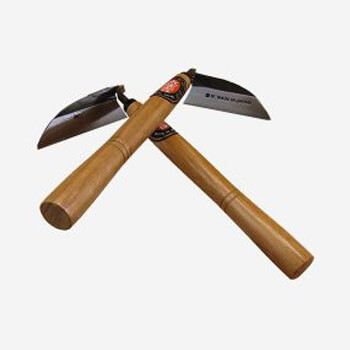10 月 . 13, 2024 13:12 Back to list
Exploring the Advantages of 3-Way Ball Valves in Industrial Applications
Understanding 3-Way Ball Valves Design, Function, and Applications
In industrial and commercial fluid control systems, valves play a crucial role in regulating the flow of liquids and gases. Among various types of valves, the 3-way ball valve stands out for its versatility and efficiency. This article will delve into the design, functionality, and applications of the 3-way ball valve.
What is a 3-Way Ball Valve?
A 3-way ball valve is a type of valve that has three ports and uses a spherical disc (the ball) to control the flow of media. The ball has a hole through the center that aligns with the ports to allow fluid to pass through. Depending on its position, the ball can either stop flow, redirect it from one port to another, or mix flows from multiple sources.
Design Features
The typical construction of a 3-way ball valve includes several key components
1. Ball The central element of this valve, the ball is made from durable materials such as stainless steel, brass, or PVC, allowing it to withstand various pressures and temperatures. The ball features a hole, or port, that is precisely machined to ensure a tight seal when closed.
2. Body The body of the valve encases the ball and is designed to accommodate the necessary ports. It is available in various configurations, including T-pattern and L-pattern designs, each serving specific flow requirements.
3. Seals Seals made from elastomers or PTFE are used to prevent leakage around the ball when it is closed. The integrity of these seals is crucial in maintaining the valve's performance.
4. Actuator Depending on the application, a 3-way ball valve can be manually operated or automated using actuators. Electric, pneumatic, or hydraulic actuators can be integrated to allow for remote control and enhanced operational efficiency.
Functionality
The primary function of a 3-way ball valve is to control the flow path of fluids. In its T-pattern configuration, the valve can connect three different passageways, allowing for mixing, diverting, or combining flows. For example, it can facilitate the mixing of two different fluids for a specific process or can redirect flow from one pipe to another.
In L-pattern configurations, it typically serves as a diverter, directing the fluid flow from one inlet to another while blocking off the third port. The operation is straightforward; as the handle or actuator turns the ball, the flow path changes correspondingly.
Applications
3 way ball valve

3-way ball valves are widely used across various industries due to their versatility
. Some common applications include1. HVAC Systems In heating, ventilation, and air conditioning systems, 3-way ball valves help in regulating the flow of hot and cold water, ensuring efficient temperature control.
2. Chemical Processing These valves are crucial in chemical plants where they are used for mixing chemicals, diverting flows, or controlling the delivery of materials in process lines.
3. Water Treatment In municipal water treatment facilities, 3-way ball valves facilitate the mixing of different treatment chemicals and help in the distribution of treated water.
4. Oil and Gas In the oil and gas industry, these valves are used for process flow control, allowing operators to manage the flow of different types of hydrocarbons.
5. Food and Beverage The food industry utilizes 3-way ball valves to regulate the flow of ingredients, ensuring safe and efficient processing.
Advantages
The 3-way ball valve offers several advantages over other types of valves, such as
- Versatility With its multiple ports, it can perform various functions, including mixing, switching, and flow distribution.
- Minimized Pressure Drop Due to its design, a 3-way ball valve typically presents a lower pressure drop than other valve types, leading to more efficient operational dynamics.
- Durability Constructed from robust materials, these valves can withstand high pressures and are suitable for harsh environments.
- Quick Operation The quick quarter-turn operation of the ball allows for rapid switching of flow paths, delivering efficiency in processes that require prompt adjustments.
Conclusion
In summary, the 3-way ball valve is a vital component in many fluid control applications, serving diverse functions across various industries. Its reliable performance, combined with the ability to facilitate complex flow schemes, makes it an indispensable tool in modern engineering and process management. As technology continues to evolve, the design and efficiency of 3-way ball valves are likely to improve further, solidifying their place in the future of fluid control solutions.
Share
-
Understanding the Differences Between Wafer Type Butterfly Valve and Lugged Butterfly ValveNewsOct.25,2024
-
The Efficiency of Wafer Type Butterfly Valve and Lugged Butterfly ValveNewsOct.25,2024
-
The Ultimate Guide to Industrial Swing Check Valve: Performance, Installation, and MaintenanceNewsOct.25,2024
-
Superior Performance with Industrial Swing Check Valve: The Essential Valve for Any SystemNewsOct.25,2024
-
Industrial Swing Check Valve: The Ideal Solution for Flow ControlNewsOct.25,2024
-
You Need to Know About Industrial Swing Check Valve: Functionality, Scope, and PerformanceNewsOct.25,2024